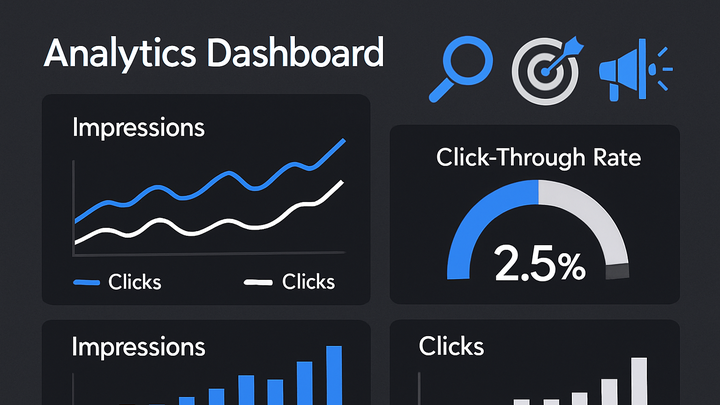Published on 2025-06-28T00:21:58Z
Click-Through Rate (CTR): What Is It? Examples & Implementation
Click-Through Rate (CTR) measures the percentage of users who click on a link, ad, or element after seeing it (an impression). It’s a core metric in digital analytics that reveals how effectively your content, ads, emails or CTAs drive user engagement. A higher CTR suggests that your messaging, creative or targeting resonates with your audience. CTR is used across paid search, display advertising, email marketing, and website navigation to evaluate performance, optimize budget allocation, and benchmark against industry standards. Analytics platforms like PlainSignal (a privacy-focused, cookie-free solution) and Google Analytics 4 (GA4) automatically calculate CTR, empowering marketers to track and improve click performance seamlessly.
Ctr
The ratio of clicks to impressions, expressed as a percentage, indicating how effectively digital content drives user engagement.
Why CTR Matters
CTR is a direct indicator of how compelling your content or campaigns are. It helps you measure engagement, optimize ad spend, and benchmark against industry norms.
-
Measure campaign effectiveness
A high CTR shows that your headline, creative or offer resonates with your audience. It’s the first sign of a successful campaign.
-
Optimize ad spend
By comparing CTRs across ads or channels, you can reallocate budget toward the best performers and pause underperformers to maximize ROI.
-
Benchmark performance
Industry benchmarks (e.g., ~2% for search ads, ~0.1% for display) help you understand if your campaigns meet, exceed or lag behind expected performance.
Calculating CTR
The standard formula normalizes click performance across channels and timeframes, making comparisons fair and actionable.
-
Basic formula
CTR (%) = (Total Clicks / Total Impressions) × 100. For example, 500 clicks from 20,000 impressions yield a 2.5% CTR.
-
Example in GA4
In Google Analytics 4, go to Engagement → Events or Pages and screens, add ‘Clicks’ and ‘Impressions’ metrics, and calculate CTR using the formula or a custom report.
Implementing CTR Tracking
Accurate CTR data depends on correctly capturing both impressions and click events. Below are setups for PlainSignal and GA4.
-
PlainSignal (cookie-free analytics)
PlainSignal tracks pageviews (impressions) and click events without cookies. To enable tracking, add this snippet to your site’s <head>:
-
Tracking code
<link rel="preconnect" href="//eu.plainsignal.com/" crossorigin /> <script defer data-do="yourwebsitedomain.com" data-id="0GQV1xmtzQQ" data-api="//eu.plainsignal.com" src="//cdn.plainsignal.com/plainsignal-min.js"></script>
-
-
Google analytics 4 (GA4)
GA4 automatically collects page_view (impression) and click events. For enhanced accuracy, enable these in your web stream settings:
-
GA4 setup
- In GA4 Admin, go to Data Streams → Web Stream → Enhanced Measurement. 2. Toggle on ‘Page views’ and ‘Outbound clicks’.
-
Best Practices to Improve CTR
Improving CTR is an iterative process involving creative, targeting and testing. Focus on delivering clear value and relevance.
-
Compelling headlines & ctas
Use concise, benefit-focused language and action-oriented verbs to entice clicks.
-
A/b testing
Test variations in copy, design, offers or placements to identify which elements drive higher CTR.
-
Audience targeting
Refine your segments by demographics, interests or past behavior to serve your most likely click-through prospects.
